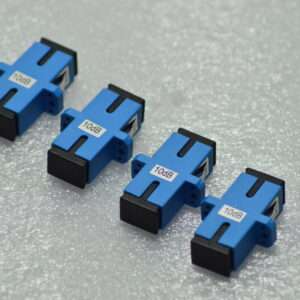Fiber Interconnectivity
FBT Coupler
FBT (Fused Bi-Conical Taper) couplers are indeed essential components in fiber optic networks, enabling the splitting or combining of optical signals. They’re crafted by fusing two or more optical fibers together, typically employing G652D category fibers due to their compatibility with fusion techniques. The FBT couplers come in various forms tailored for different network requirements.
- Bare Fiber Splitters: These are basic FBT couplers where the fibers are directly fused together without any additional housing. They’re often used in applications where space is limited and cost-effectiveness is paramount.
- Steel Type Mini Coupler: Steel-type mini couplers incorporate a protective steel casing around the fused fibers, providing durability and protection against environmental factors. They’re suitable for outdoor installations or rugged environments where additional robustness is required.
- ABS Type Coupler: ABS (Acrylonitrile Butadiene Styrene) type couplers feature a housing made of ABS plastic, offering a lightweight and cost-effective solution for indoor installations. They provide mechanical protection to the fused fibers and are commonly used in various indoor networking applications.
FBT couplers offer a wide range of splitting ratios, typically ranging from 50:50 to 95:05, allowing network engineers to tailor the signal distribution according to specific requirements. This versatility makes them indispensable in various network configurations, offering a balance between performance, cost-effectiveness, and flexibility.





